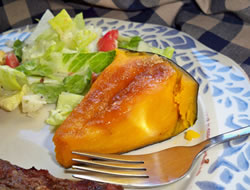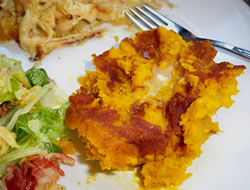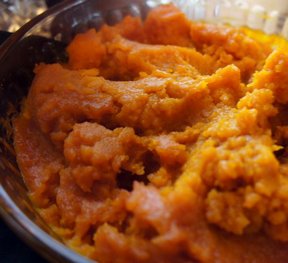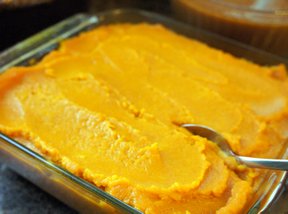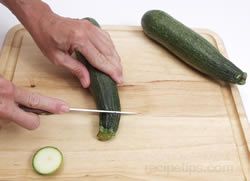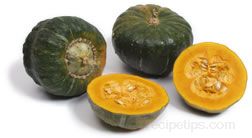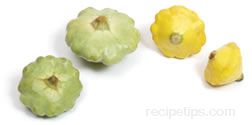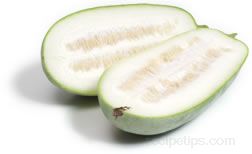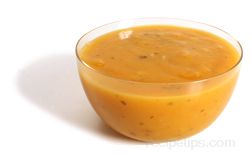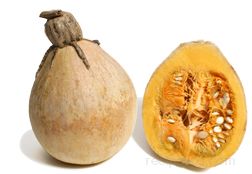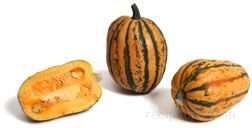Loading
Similar Content to: Hubbard Squash
back to Hubbard Squash
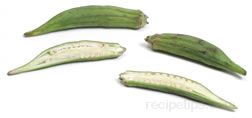
A long, cylindrical variety of squash, native to Asia, that is generally harvested when it is between 1 to 2 feet in length, but can be grown as long as 8 to 10 feet. It has a dark green outer skin with longitudinal ridges covering a somewhat spongy and fiberous pulp, somewhat similar to a cucumber. If picked when it is young, about 6 to 10 inches in length, the meat is tender and similar to a zucchini in flavor. When allowed to grow longer in length, the squash becomes bitter tasting and less flavorful. It is a good squash to add to salads or stir-fried foods. Since the meat of this squash is very absorbant, it takes on the flavors of other ingredients as it cooks. As a very small and young squash, it is sliced into round pieces and used as an ingredient for soups, stews and rice dishes. Larger sized squash are most often served as a vegetable dish or cut into smaller pieces for stir-fried dishes.
After harvesting, Chinese okra should be kept refrigerated in a paper bag for 5 to 8 days. As an Asian squash, this variety has many different names. It is known as dishrag or dishcloth gourd, luffa, loofah, ridged loofah, ridged gourd, silk gourd, silk squash, see gua, sin qua, sing qua, smooth squash, sponge gourd, as well as cabatiti, ghosala, hechima, kwa, muop khia, patola, patolang, see kwa, shui, sing gwa, sinqua, sko ah, sze gwa, ta toorai, and tooria, and tsu kua. The dishcloth or dishrag name refers to the fiberous webbing that forms inside the older and larger squash, as they mature, that can be removed and is actually used for washing in some countries.

Loading
Advertisement
Advertisement



